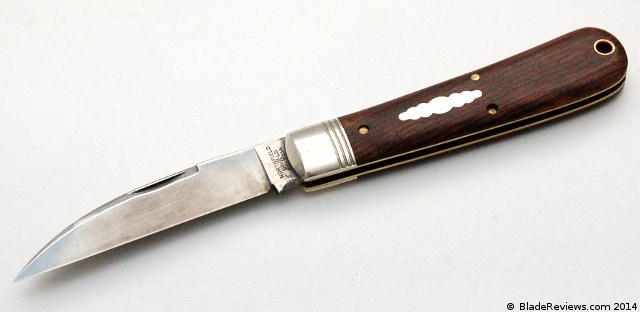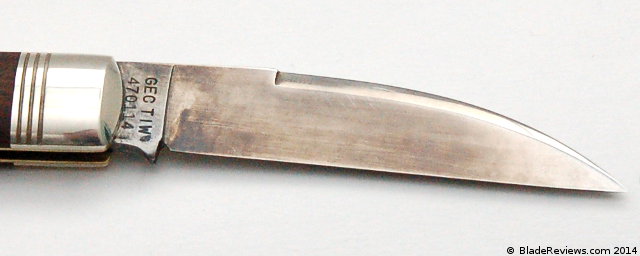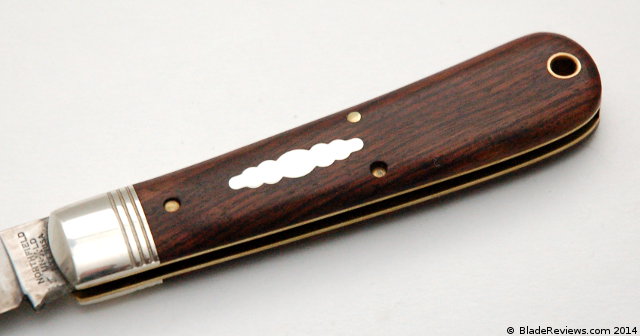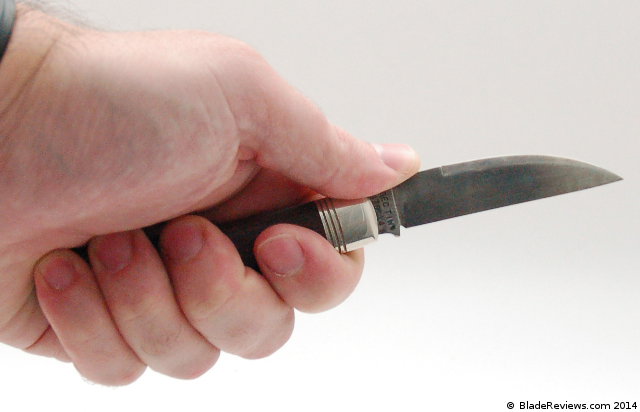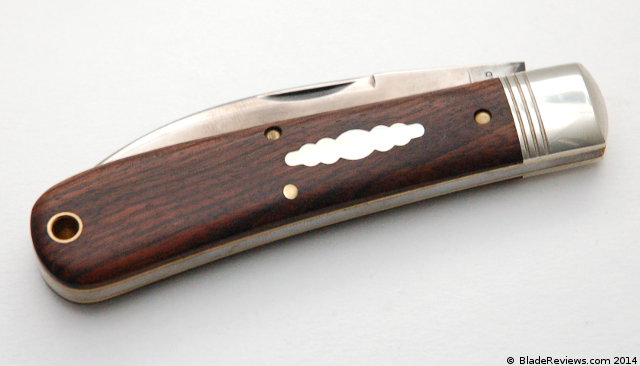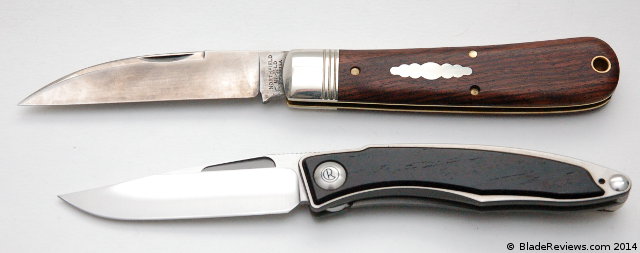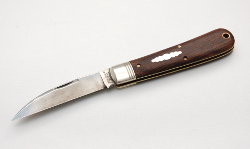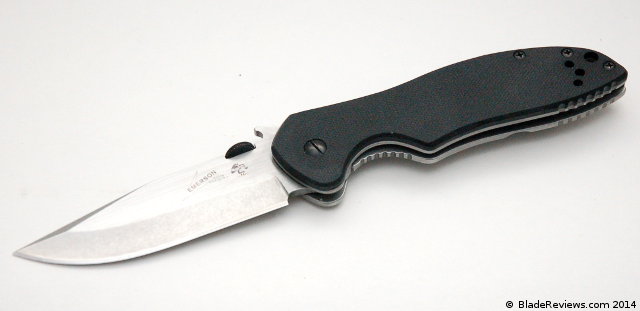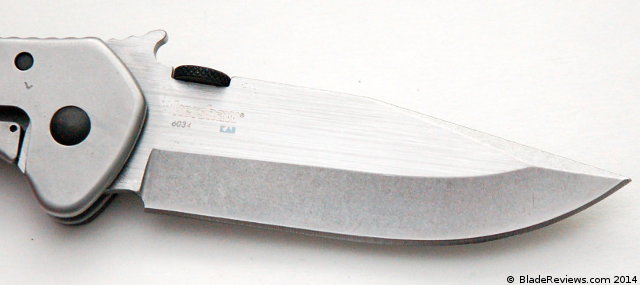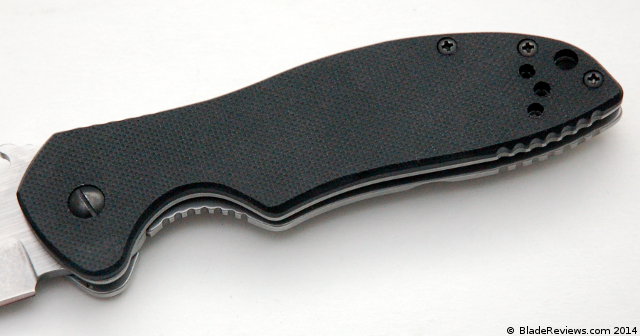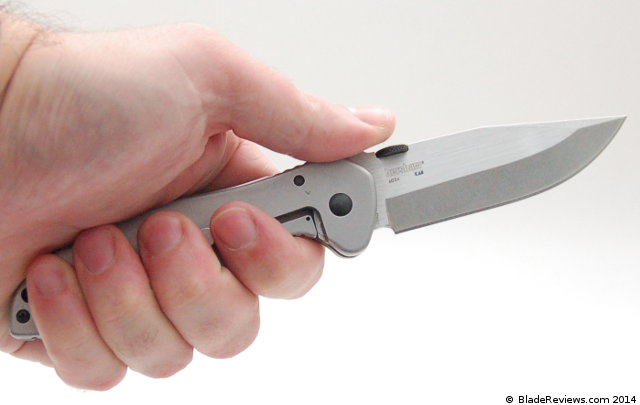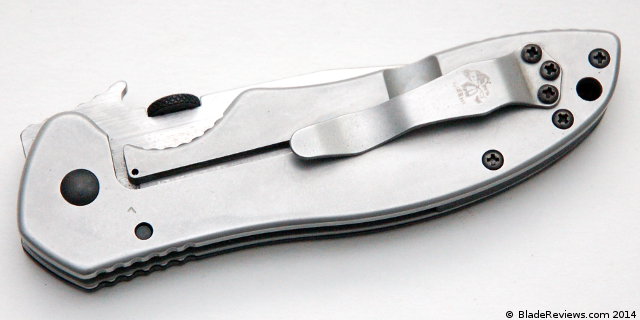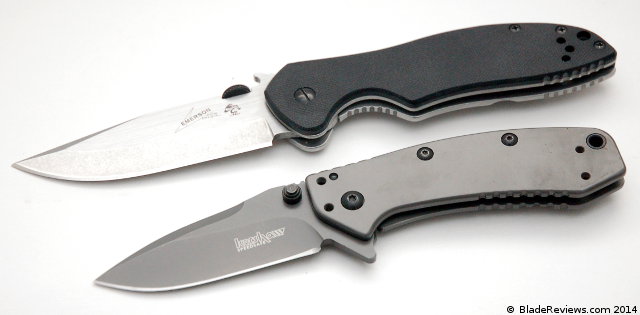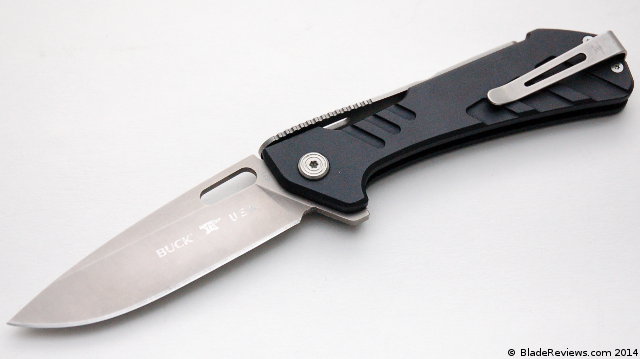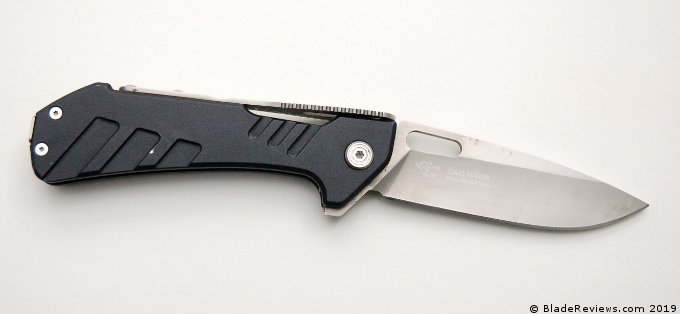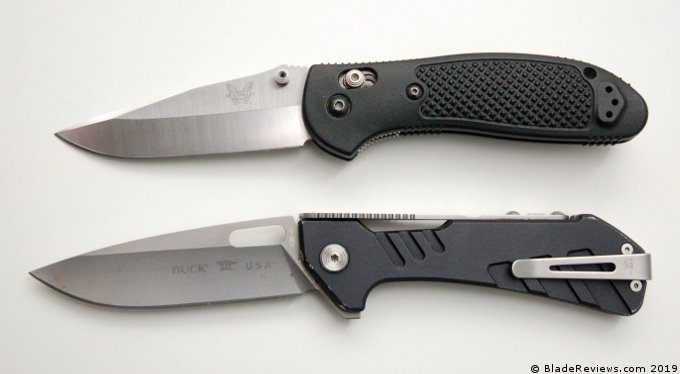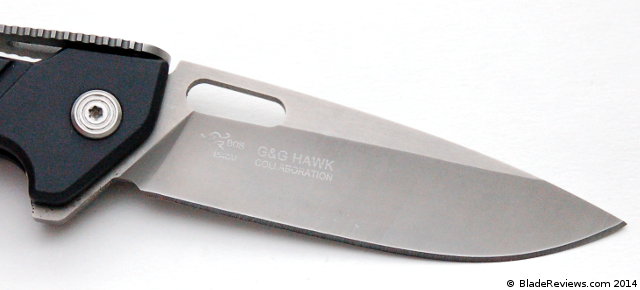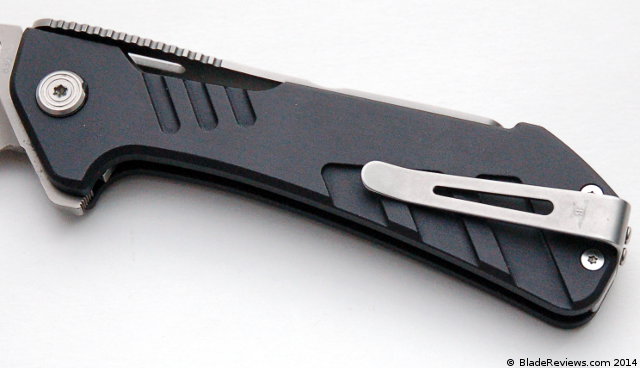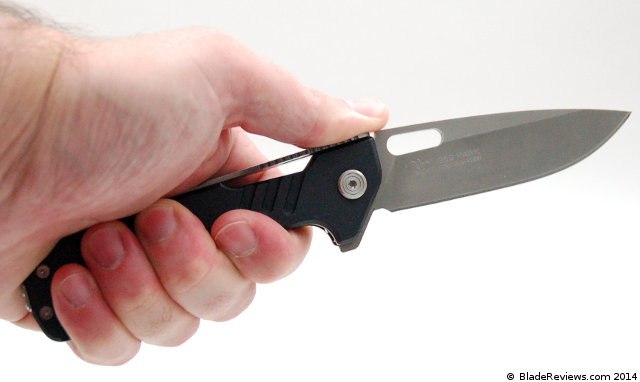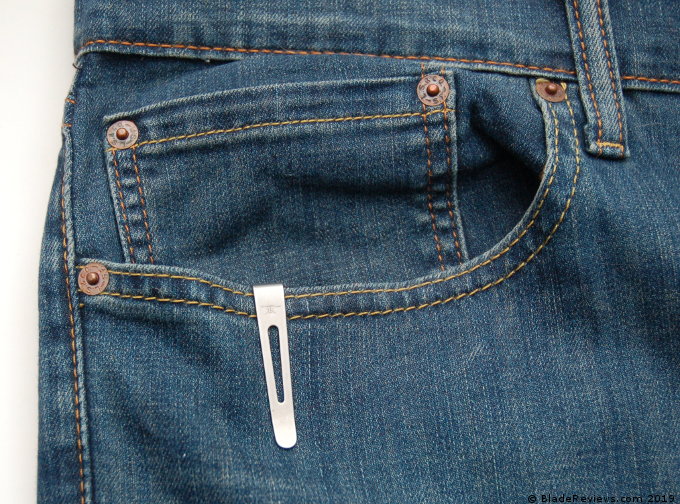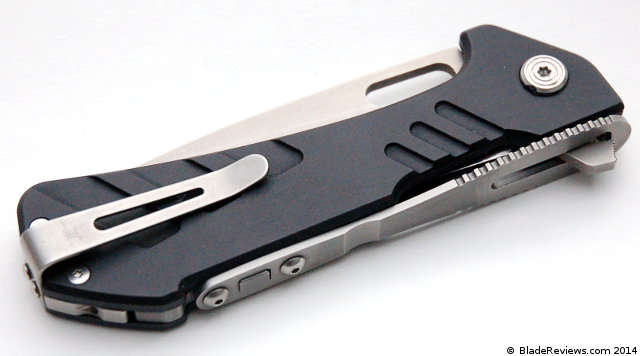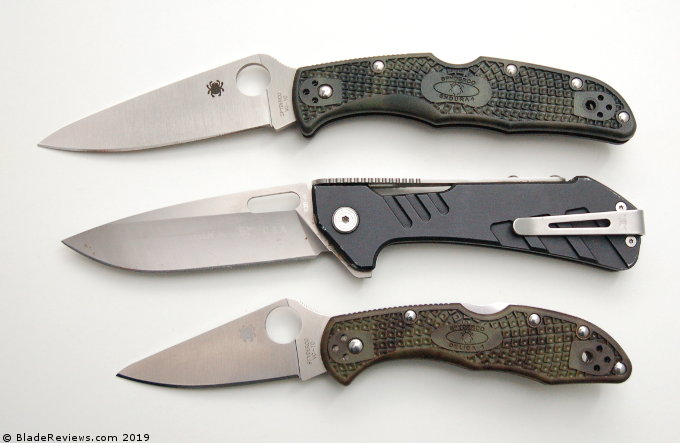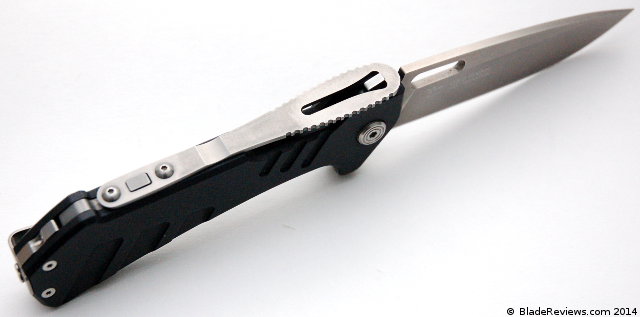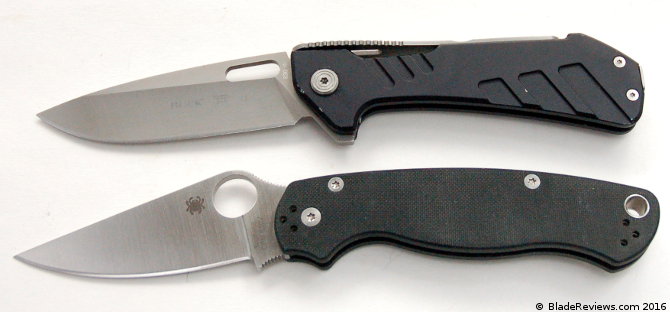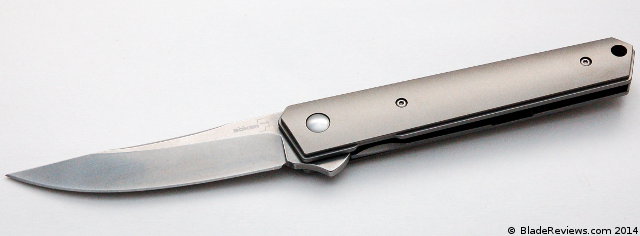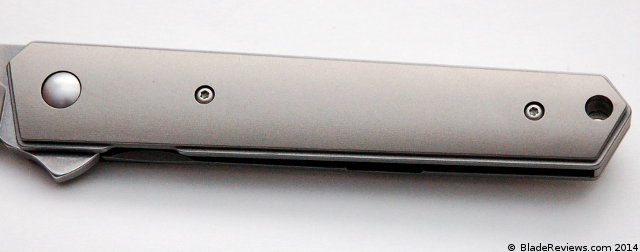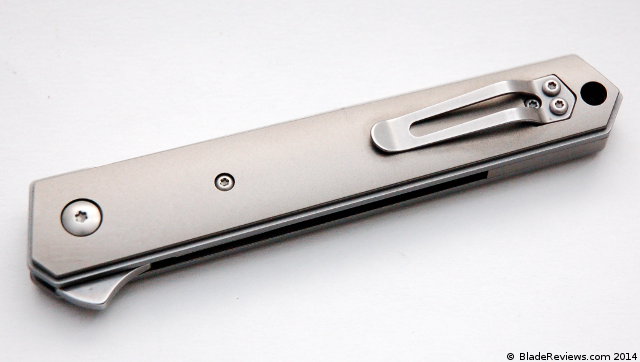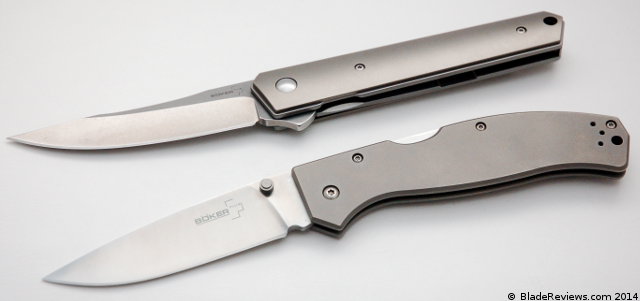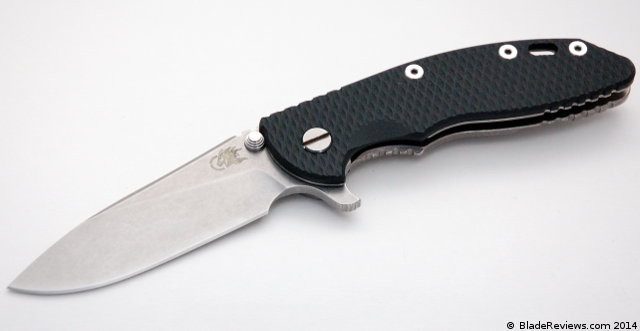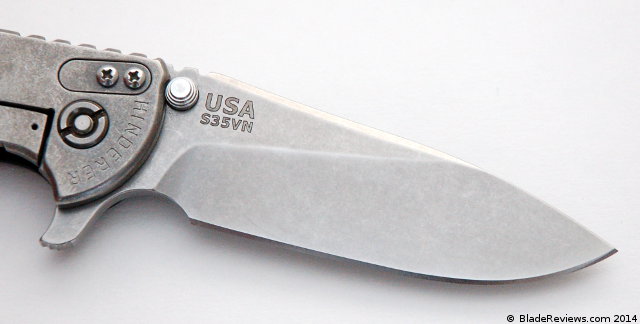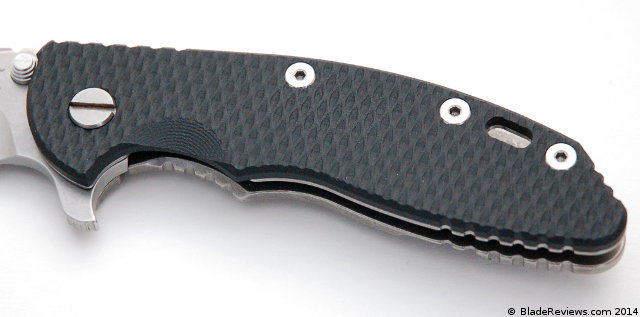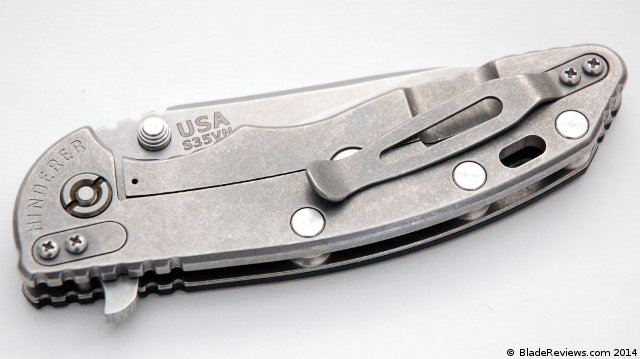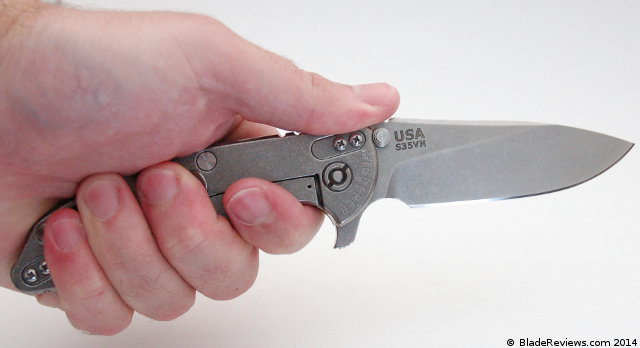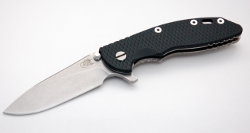Ed Schempp’s designs are something of an acquired taste. The man isn’t afraid to try new things, and his “function over form” design philosophy aligns nicely with Spyderco’s credo. He has worked on a series of ethnic folders with Spyderco which have intrigued me, although never to the point of acquisition. I have always found his designs to be a little strange.
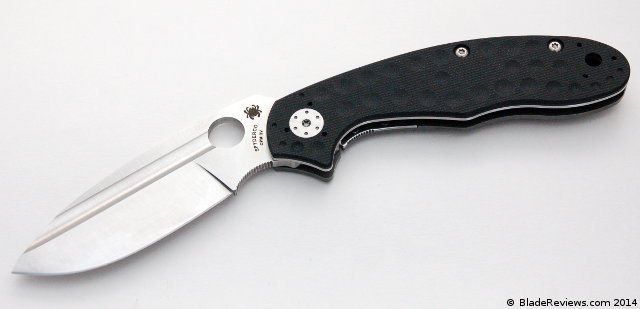
Buy the Spyderco Tuff at BladeHQ
That said, the Tuff slowly grew on me. Not so much from a visual standpoint, but from the idea of designing a knife that is such an unapologetically hard use folding knife. We often see “hard use” folding knives that fit inside a lot of the tropes of well established knife design. The Tuff looks more at home in a scene from Aliens than it does sitting in the display case of a cutlery shop. The Tuff is extreme. That is what drew me to this knife.
General Dimensions and Blade Details
The Tuff has an overall length of 8.85″, a 3.7″ blade, and weighs 6.3 ounces. This ain’t no normal EDC knife. Surprisingly, it feels lightweight for its size, and carries most of its weight in its 4mm thick blade. I am not sure who this is good for as a daily use knife. It would be good for a camp site, a farm, or maybe if you were 350 pounds and rode in a motorcycle gang for a living.
As for self defense applications, I certainly would not want to be stabbed with this knife… for whatever that is worth. I have enjoyed carrying the Tuff on the weekends and for purposes of putting this review together, and wouldn’t mind having one in my pocket while traversing a dark alley, but I can’t say that I need a knife like this to accomplish my basic daily tasks.
The blade of the Tuff is almost like a beak. The tip is insane. It’s a thick piece of 3V steel, with a dramatic fuller running almost the entire length of the blade. The fuller looks cool, lightens the blade up a little bit, and offers an alternate means of opening the knife. The flat grind is thick, but that’s par for the course with this kind of knife. It still cuts pretty well for what it is. The large forward choil leaves you with a mere 3 inches of cutting edge, not a ton given it’s overall size. What else can I say? It’s a brutish blade. The satin finish is handsome and lends almost a surgical appearance to the tool.
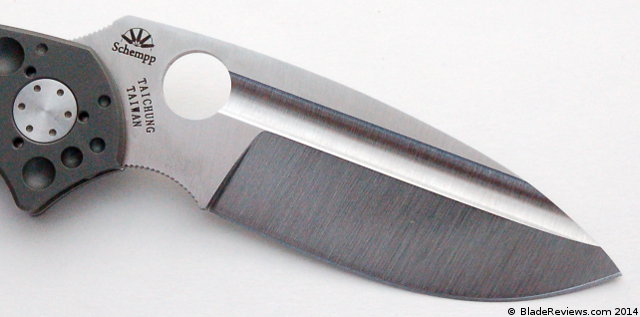
3V steel is a high carbon tool steel known for it’s combination of edge retention and extreme toughness. This is actually my first knife in 3V, so I was especially interested in examining its performance. I know that Strider has been using 3V on their toughest folders and I have seen it showing up in a lot of custom and mid tech offerings as well. It has been received very well by the knife community as a hard wearing no-nonsense premium steel for those wanting extreme toughness and good edge retention.
There are folks on YouTube using 3V knives to bust up cinder blocks. I’m not nearly that hardcore. But I ran the knife through a series of tests with cardboard, rope, and wood, and even did some light chopping with it. The edge (and lock) held up well. The edge seemed toothy and cut very aggressively – kind of like M4.
While this is a thick blade and the geometry isn’t ideal for fine slicing (forget cutting up an apple with it), the knife cut surprisingly well. Much better than say, my SnG, which also is a very stout blade. When it came time to sharpen I did not have any issues with a strop and fine Spyderco Sharpmaker stones. Like many high carbon steels, 3V felt like it wanted to take an edge. No issues with rust or corrosion either, although this is not a stainless steel knife and you need to exercise some care with it. I found M4 on my Gayle Bradley took a patina faster than this 3V.
Handle, Ergonomics, and Pocket Clip
The Tuff’s handle features a black G10 scale over a full stainless steel liner, a partial G10 backspacer, and a thick titanium framelock. Oh, and there are dimples all over the handle. The dimples are visually interesting, lighten the knife up a little bit, and are well executed. This knife has come from Spyderco’s Taiwan-based manufacturer, and the fit and finish of this handle is immaculate. The stainless steel liner has been drilled out to keep the weight down, the oversized pivot is a custom piece, and all the pieces line up perfectly. This is what I have come to expect from Taiwanese Spydercos, and I’m pleased to say I haven’t been disappointed.
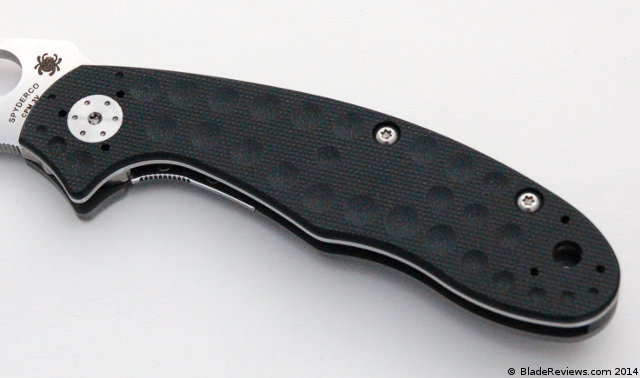
The Tuff is a surprisingly comfortable knife. Or maybe that isn’t a surprise given how ugly this thing is. Regardless, it’s comfortable. With the forward choil the handle is so big I can almost get 2 hands on it, so you have options as to hand placement. You can choke up on the blade for more precision work. You can also lean far back on the handle for light chopping. The knife is almost like a folding kukri. There is a run of jimping on the spine, choil, and lock relief. All of the jimping works well without being overly annoying. The handle design itself has a strong negative angle, which has a way of putting the blade on target. Overall I found the Tuff to be comfortable and easy to work with.
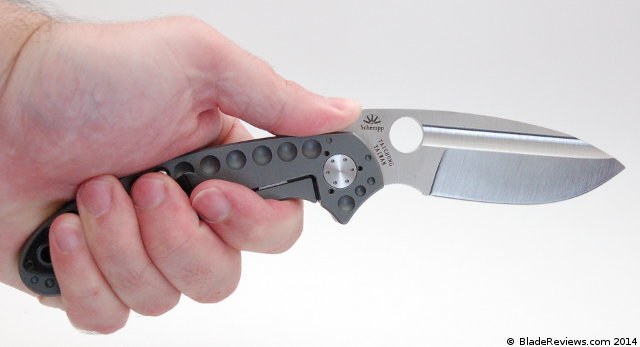
The pocket clip is a 4-position blackened stainless steel spoon clip. It has good tensile strength, and is planted in place with three fasteners that fit over the pivot or lanyard hole. The clip has been finished with something of a black chrome look, and it gives the clip some depth and character. It isn’t an ultra deep carry clip. I suspect it has been designed to be strong and easy to access. In pocket the Tuff carries well for it’s size. It’s a flat knife and is relatively lightweight give its size. For a working knife like this I think they did a good job with the pocket clip.
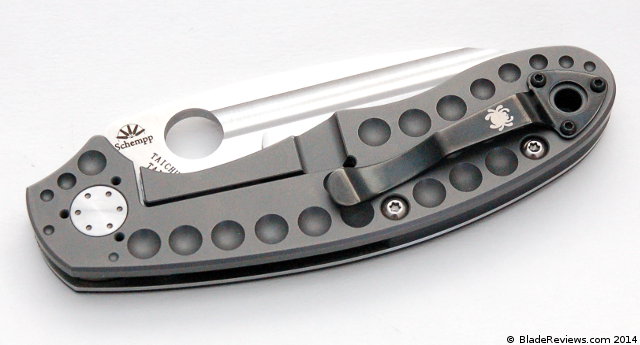
Deployment and Lockup
Spyderco included a generous thumb hole with the Tuff. I can flick the knife open but it usually involves shaving off a good portion of my thumb nail. The heavy blade, strong detent, and sharp thumb hole do not make this the easiest knife to flick open – but it is possible. I tend to prefer using the fuller to push the blade open. It catches the thumb nicely and gets the job done. The action of the knife was very smooth straight out of the box thanks in part to generous phosphor bronze washers.
For lockup the Tuff is equipped with a short throw titanium frame lock. It’s a sturdy lock further reinforced with a stainless steel lockbar insert. The lock bar insert also doubles as a hidden lockbar stabilizer. The stop pin on this knife is about as thick as I have ever seen. It’s a really impressive stop pin.
In an earlier version of the knife I handled, I recall the lock being real “tuff” to disengage. I bought my personal knife a few months ago, and this version is easier to disengage. I realize that this is a knife designed for he man alpha males, but I appreciate that this lock bar is easier to disengage. Also, the knife is very smooth. The blade will fall close when you disengage the lock.
As for lock strength, I haven’t taken this knife to the moon or entered it into a robot fighting competition (yet), but so far it has held up well under normal use and a few trips to the back yard to beat around with some heavy cardboard, rope, and fire prep. So far so good.
Also, as an aside, I love the sound this blade makes when opening. Opening the blade slowly makes for a very satisfying “ker-thunk”.
Spyderco Tuff Review – Final Thoughts
The Spyderco Tuff lives up to it’s name. Next to the Hinderer XM-18 this is one of the most heavily built folders I have reviewed, although the Benchmade Adamas and ZT 0550 are pretty damn beefy too. Compared with a run of the mill production folder this a huge difference in build. If overbuilt is what you are looking for then check out the Tuff. For $200.00 is a serious piece of hardware.
Of course a knife like this is not for everyone. I can’t seriously EDC this thing, and I’m guessing most readers won’t. Also some people will be turned off by the looks of it. Between the dimples, huge fuller, and elongated shape I am sure it doesn’t appeal to everyone’s design tastes.
- Flat-ground drop-point Crucible CPM 3V steel blade
- Black G-10 scales
- Dimpled texture pattern
- Oversized pivot assembly and hardened steel lock interface
I recommend purchasing the Tuff at at Amazon.com and BladeHQ. Thank you very much.

